Lying 200km north of the Arctic Circle on the edge of the Torne river in Sweden is the little town of Jukkasjärvi. At the end of each winter, when the frozen river ice is at its thickest, it is harvested in preparation for construction of the annual Ice Hotel. Large blocks of ice are cut from the river in April and stored in a cool room until it is time to begin construction in October. In the meantime, during summer, the previous year’s hotel melts and the water returns to its source in the Torne river.
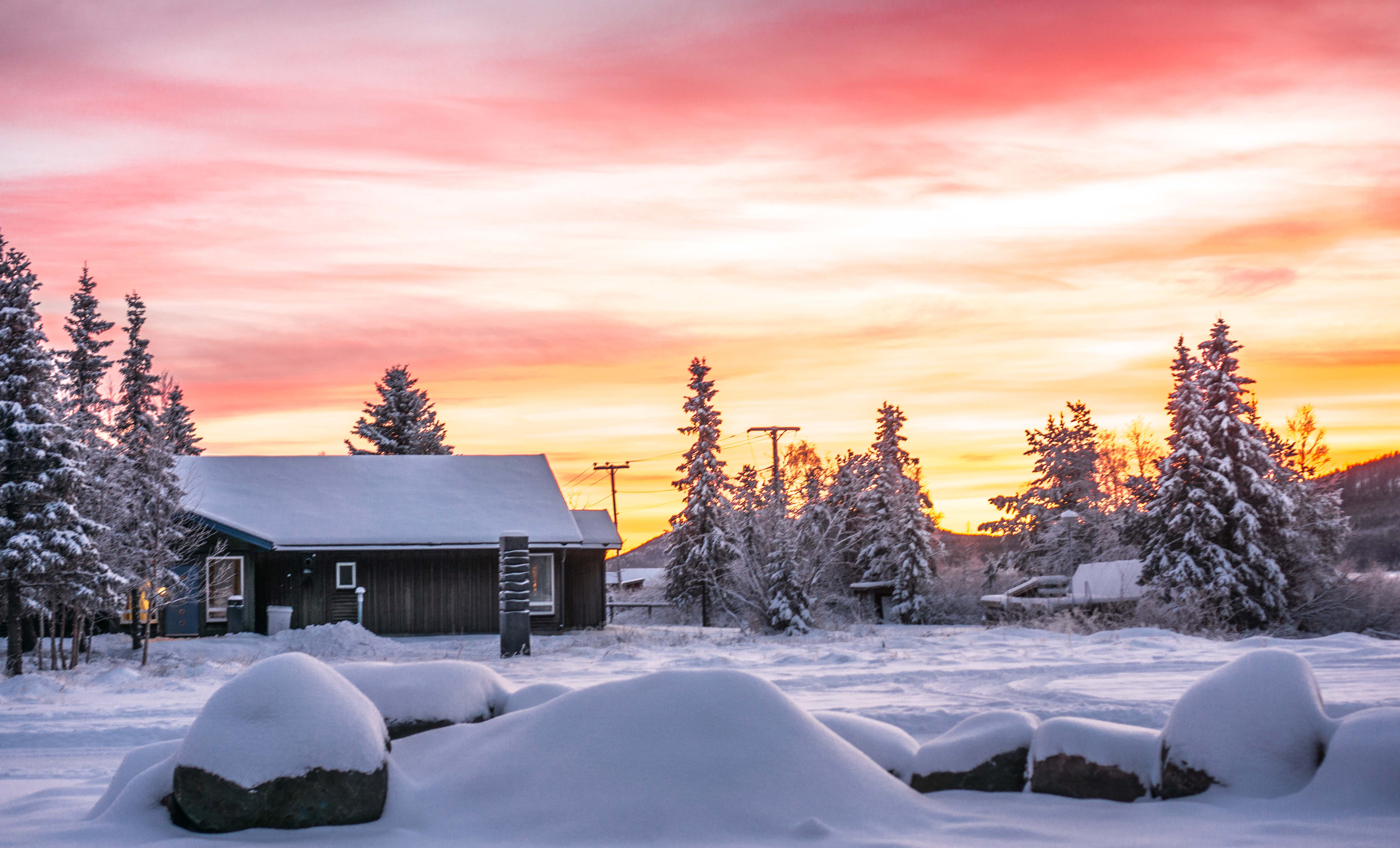
Sunset behind the Ice Hotel
It is more than just a hotel though — it is also an art exhibition of snow and ice. Each year, artists from all over the world submit designs for hotel rooms which become art suites.
We were lucky enough to be staying at the Ice Hotel during the opening ceremony of the 29th Ice Hotel on 14 December, and so were some of the first people to see the finished rooms.
The rooms are truly spectacular. There was one with a giant frosted statute of a woman, another with an oak tree whose ice branches and leaves covered the entire room, one with a VW combi van and campsite, another with ice crystals hanging from all over the ceiling, one decorated in an under-the-sea theme complete with fish, seaweed and a shark. My favourite rooms were called “lollipop”, which was designed to look like a candy shop and “jellyfish” which was filed with ‘floating’ ice jellies. These rooms are the temporary art suites designed for the temporary Ice Hotel, which is recreated in a unique style each year.

The jellyfish room
From 2016, however, the Ice Hotel has also had a permanent area of ice rooms that stay in place 365 days a year, kept cool in summer by solar power from the endless summer sun. Some of these permanent ice rooms are deluxe rooms. We decided to stay in one of the deluxe rooms, which have a large ensuite bathroom (made out of normal building materials at normal room temperature) with a shower, sauna and coffee/tea station with cosy arm chairs. There is a sort of airlock space at 10ºC between the ice room and the ensuite so that warm air doesn’t fill the ice room every time the door is opened. We also received champagne on arrival, served in goblets made of ice, of course.
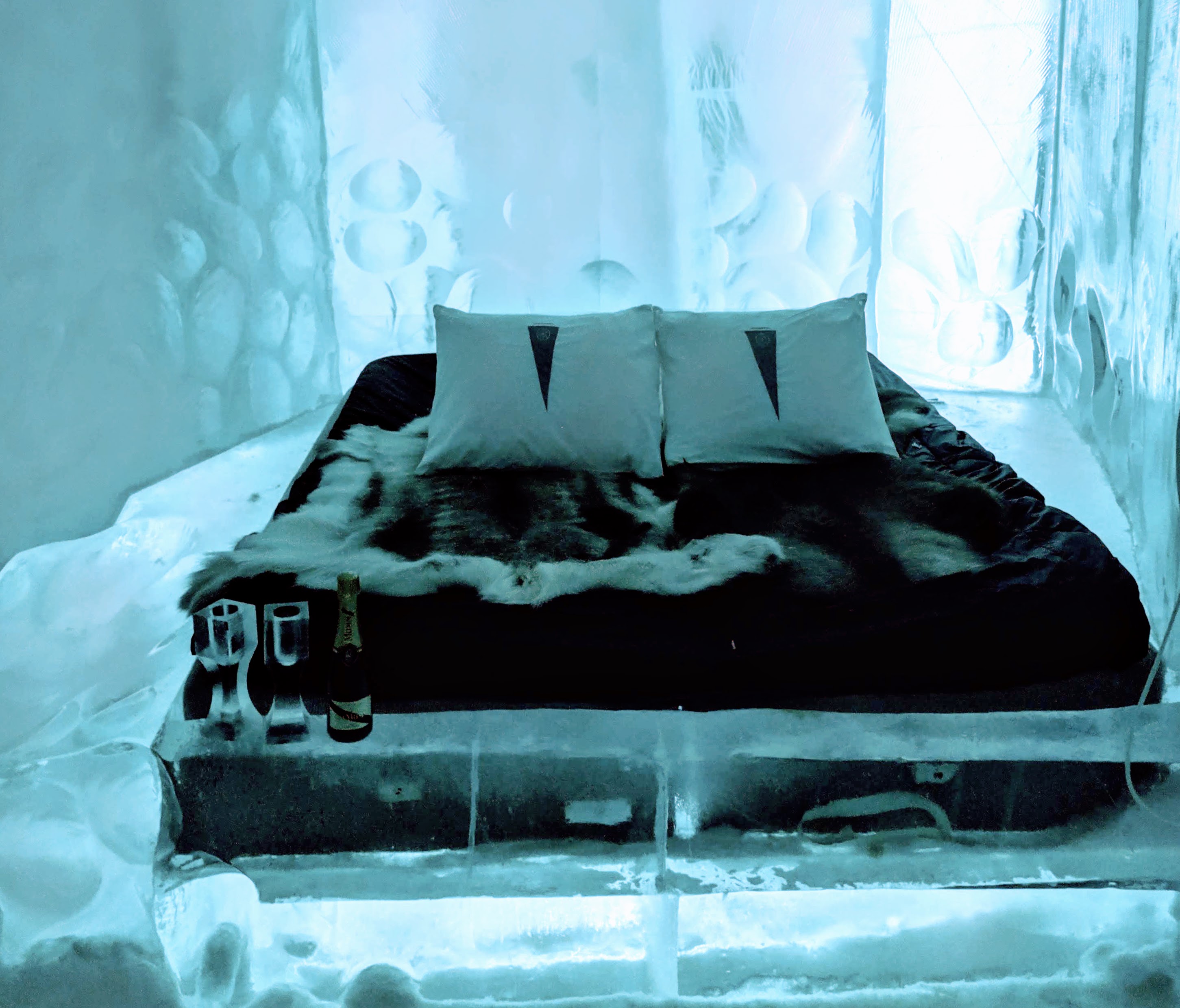
Our room at the Ice Hotel with champagne and ice goblets
The experience of sleeping in an ice room is extraordinary. The rooms sit constantly at around -5ºC, being insulated by the ice and snow. With outside temperatures as low as -20ºC, this felt comparatively comfortable when stepping inside. But even so, sleeping in a room made of ice is cold. And also surprisingly silent. The snow and ice also insulates sound, creating an eerie silence that is only broken by little pieces of ice occasionally dropping from the rounded igloo-like ceiling.
The bed frame is made out of a large block of ice, with wooden slats resting inside and topped with a rubber mattress. On top of the mattress is a reindeer hide and pillows, and then you are provided with an expedition sleeping bag that withstands temperatures down to -30ºC. We slept in one layer of thermals, woollen socks and a beanie, and with the sleeping bag, we were very warm. Just as our core body temperature dropped enough that we started to feel a bit cold in the morning, our wake up call arrived with a cup of hot lingonberry juice. We gulped our juice and quickly shuffled to the ensuite to take a warm shower and get dressed in our layers for the day.
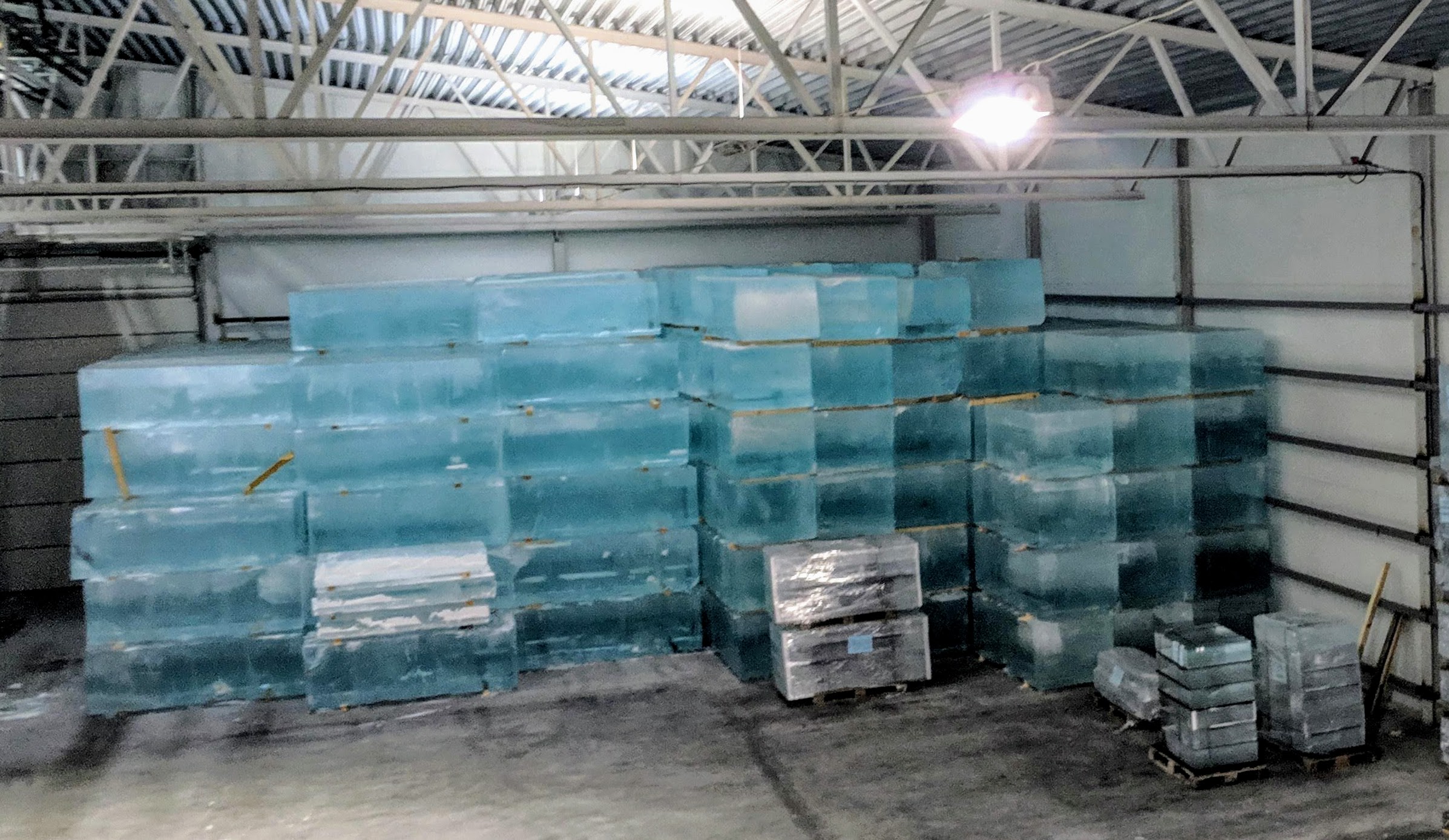
The storage room for the ice bricks that make the hotel
There are also normal hotel rooms at the Ice Hotel, so we stayed in the ice room for one night and then a warm room for the following two nights. After checking out of our ice room, we went on a tour to learn about the making of the Ice Hotel. An hour outside was hardly bearable and so we went to borrow one-piece snow suits and boots from the hotel before our afternoon dog sledding trip.

We could hear the sound of the dogs before we could see them — their howls echoing across the river as they anxiously wait to run. We sat on a large sled as 8 husky dogs pulled us down the frozen Torne river. Once they get going the dogs become silent and all that can be heard is the sound of sled being pulled through powdery snow. It was a spectacular ride down the river, watching snow-covered pine forest glide by on either side of us. Halfway in to the trip, we stopped at a teepee, where there was coffee and chocolate cake to enjoy inside by a fire.
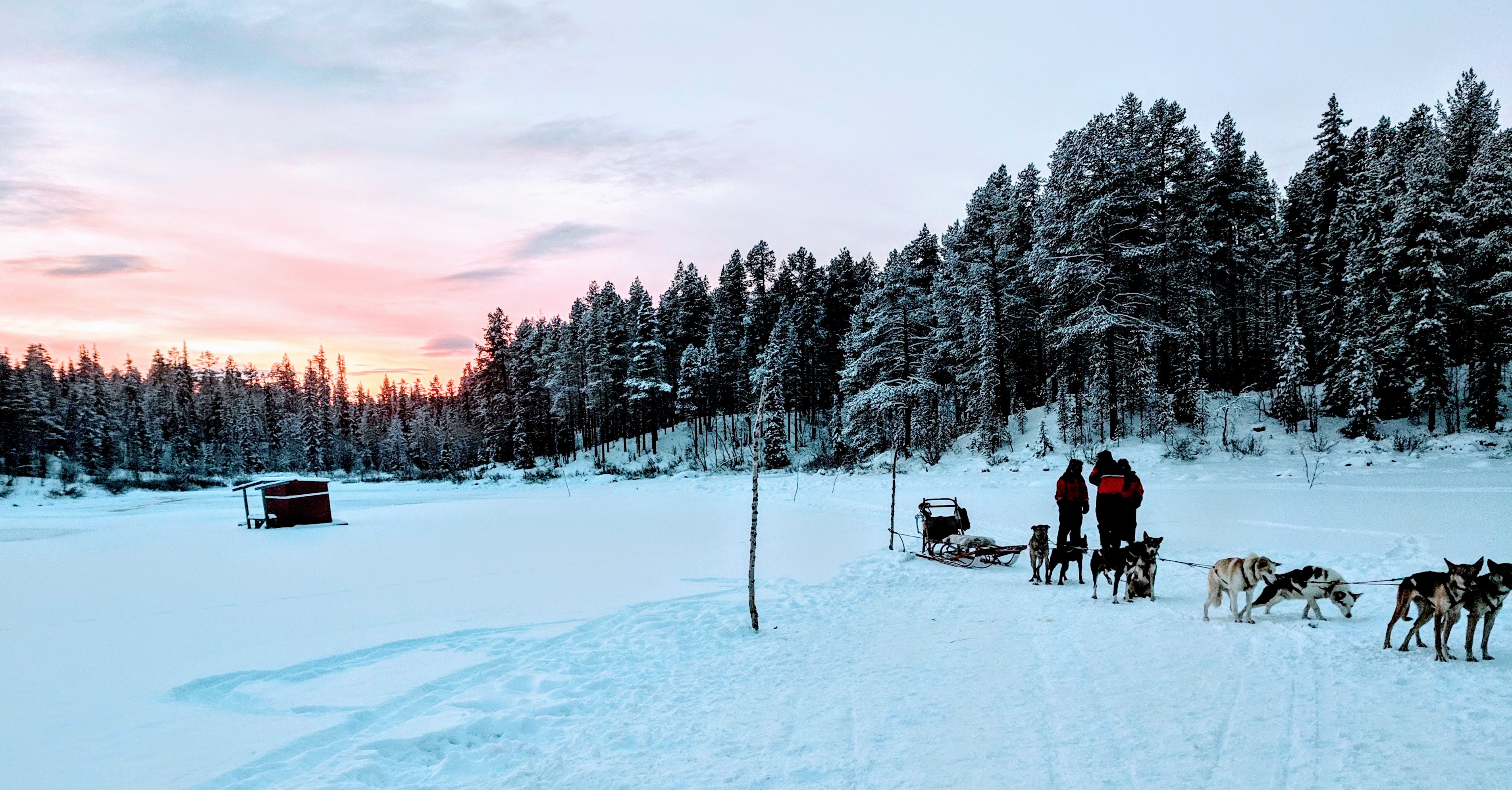
Our dogs resting while we warm up
After we had warmed up we headed back towards the Ice Hotel, but the dogs had other ideas. By now, at 2.00pm, it was dark but the dogs knew exactly where they were. As we reached a fork in the track, they were determined to take the path to the left, which took them back to their kennel, but the Ice Hotel was down the path to the right. After repeated failed attempts at getting the dogs going in the right direction, our driver decided the only way to get them to go the right way was for him to go up the front and pull them and for Dylan to drive until we were far enough down the fork. Eventually we were heading the right way and reached the hotel.
By now, after 2 hours in -16ºC, we were cold to the bone, despite being dressed like Michelin men. Our feet felt like they were on fire, our cheeks stung and snot was frozen to our faces. We ran — well as much as one can run when dressed like that — back to the hotel lobby where we knew there was a roaring fire and a thermos full of hot lingonberry juice waiting.

Hot lingonberry juice and ginger snaps
Just down the road from the Ice Hotel is Sámi Siida — a reconstructed Sámi camp that is in the location of the old Sámi market and assembly place that is the origin for the village of Jukkasjärvi. Here, you can gain insight into the life of the indigenous Sámi people, their history and traditions as a nomadic people connected to reindeer husbandry. We wandered down there in the afternoon, said hello to the reindeers and enjoyed a cup of coffee by the fire before heading back to the hotel for the evening to participate in celebrations for the Swedish tradition of Santa Lucia (St Lucy’s day). Hotel guests, as well as the locals from the town, all gathered together in the Ice Bar to listen to the children from the local school sing. Dressed in white gowns, and holding flickering candles, they sung to celebrate the mythical Saint Lucia: the bearer of light.
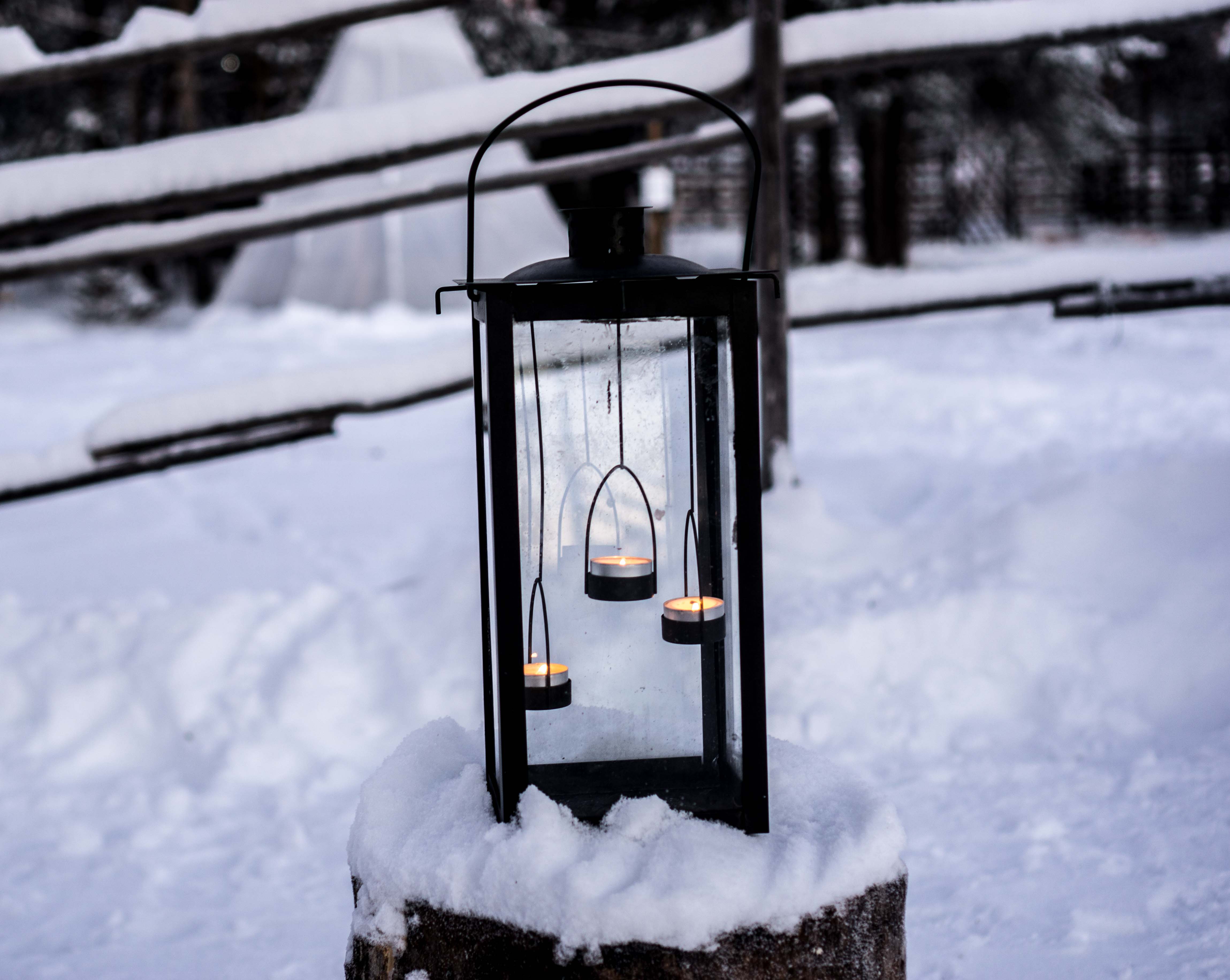
The Ice Bar at the hotel is also permanent, forming part of the same building where the permanent ice rooms are. The brightly coloured cocktails are served in a small rectangular ice glass. The second law of thermodynamics placed an upper bound of about 4 drinks in our ice glasses before they started to resemble the pottery skills of a 5 year old. But on the upside, there’s no waste or washing up — simply leave your glass in the sink and sooner or later it’ll be gone.
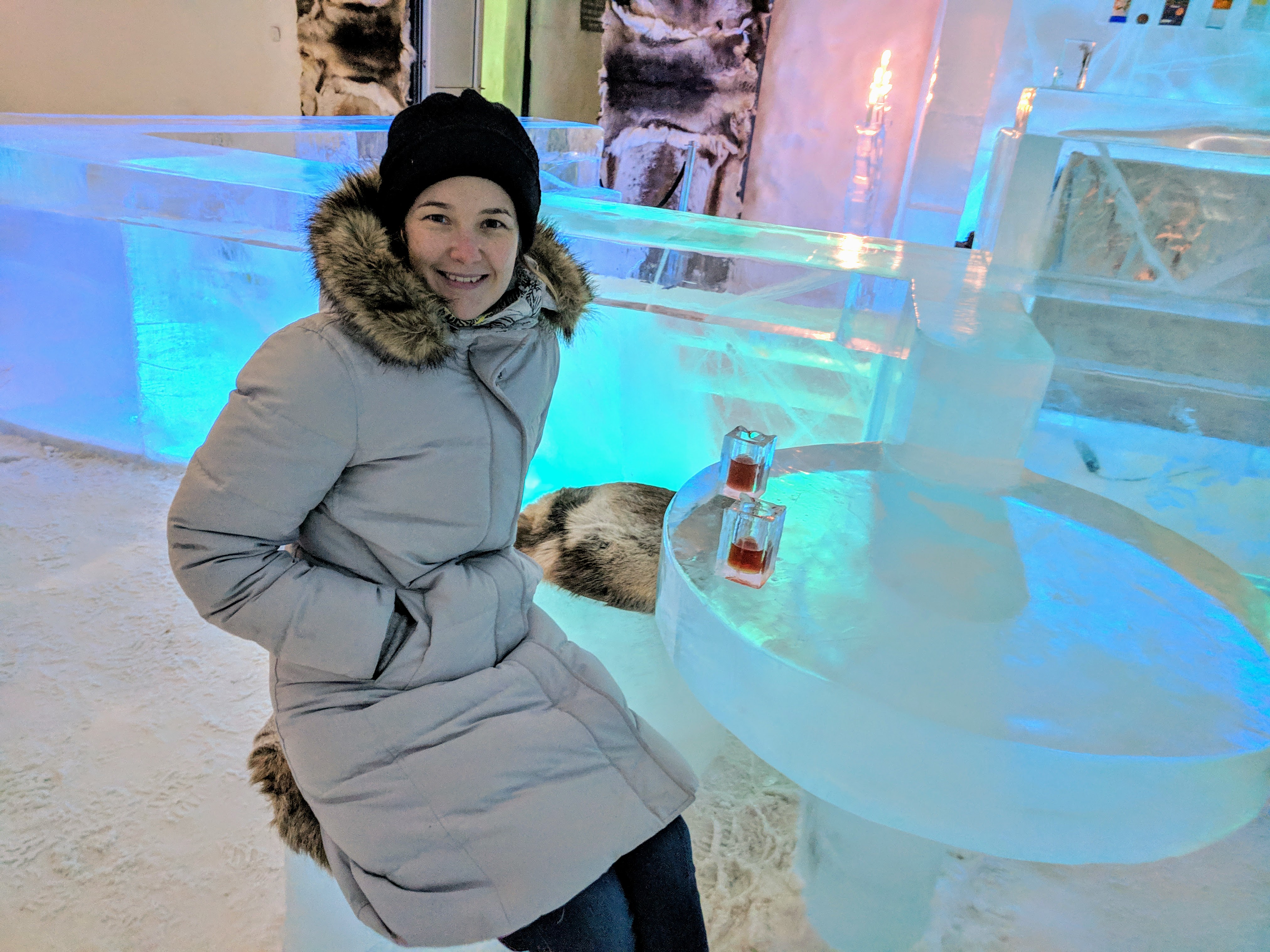
The Ice Bar cocktails
There is also another permanent ice bar, made by Ice Hotel, located in Stockholm city. We stopped in Stockholm for one night on the way to the Ice Hotel and on the way back, not being able to get connecting flights on the same day. We had also been in Stockholm in summer when we stayed in our tiny house in the Archipelago, but couldn’t get in to the Ice Bar that time because it’s often booked out in summer. But as we later discovered, in winter it’s empty. So when we were in Stockholm on the way back from the Ice Hotel we were the only people in there for most of the time so we had the place to ourselves to take photos and get quick refills on our vanishing cocktail glasses.
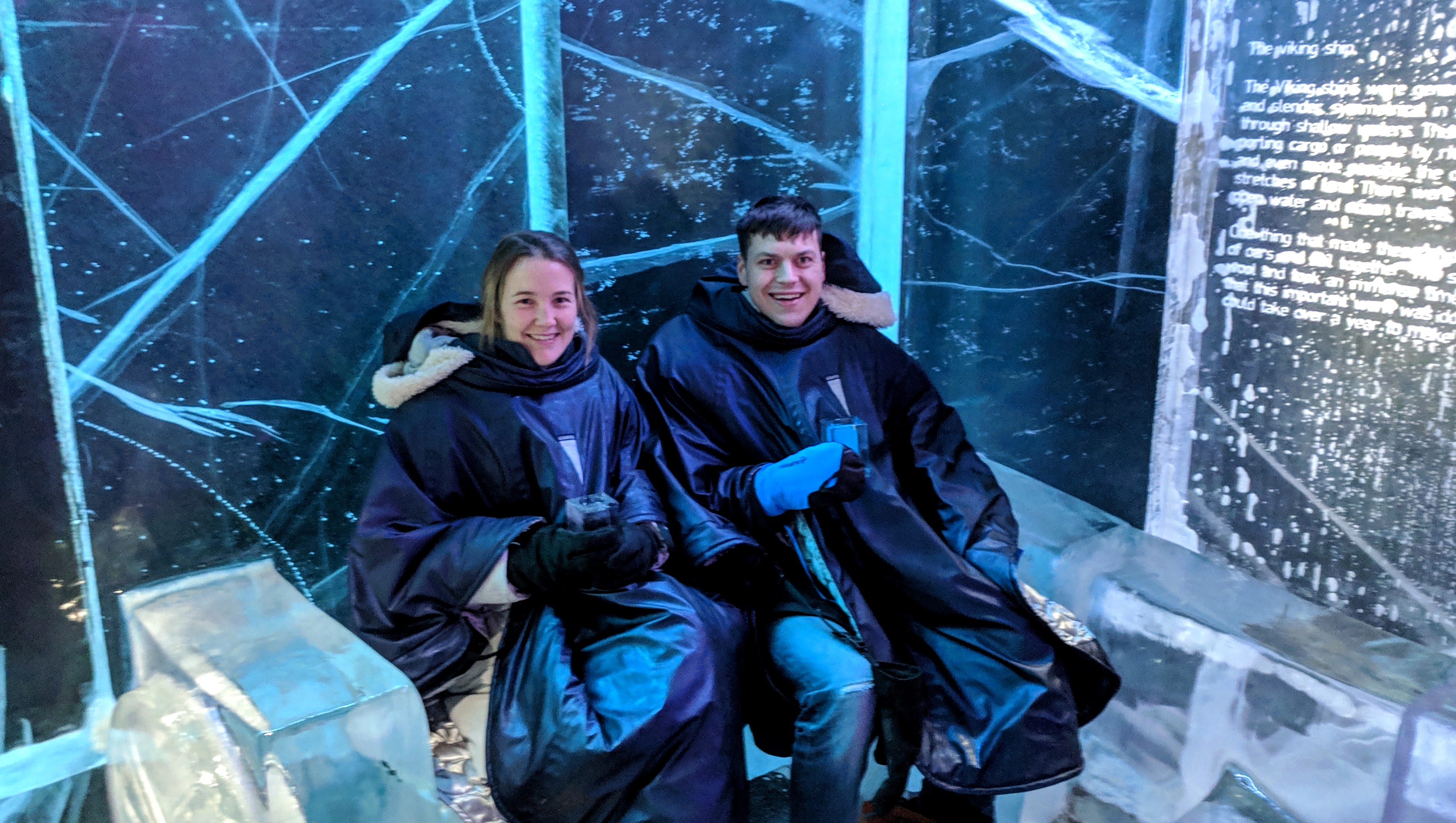
In the Ice Bar in Stockholm
The area around the Ice Hotel provides beautiful scenery for photography. At 67.8º north, the sun never fully rises in winter, but skirts along the horizon, blending sunrise into sunset for a few hours each day in a dazzling display of colour - sometimes bright oranges and yellows and other times soft purples and pinks.
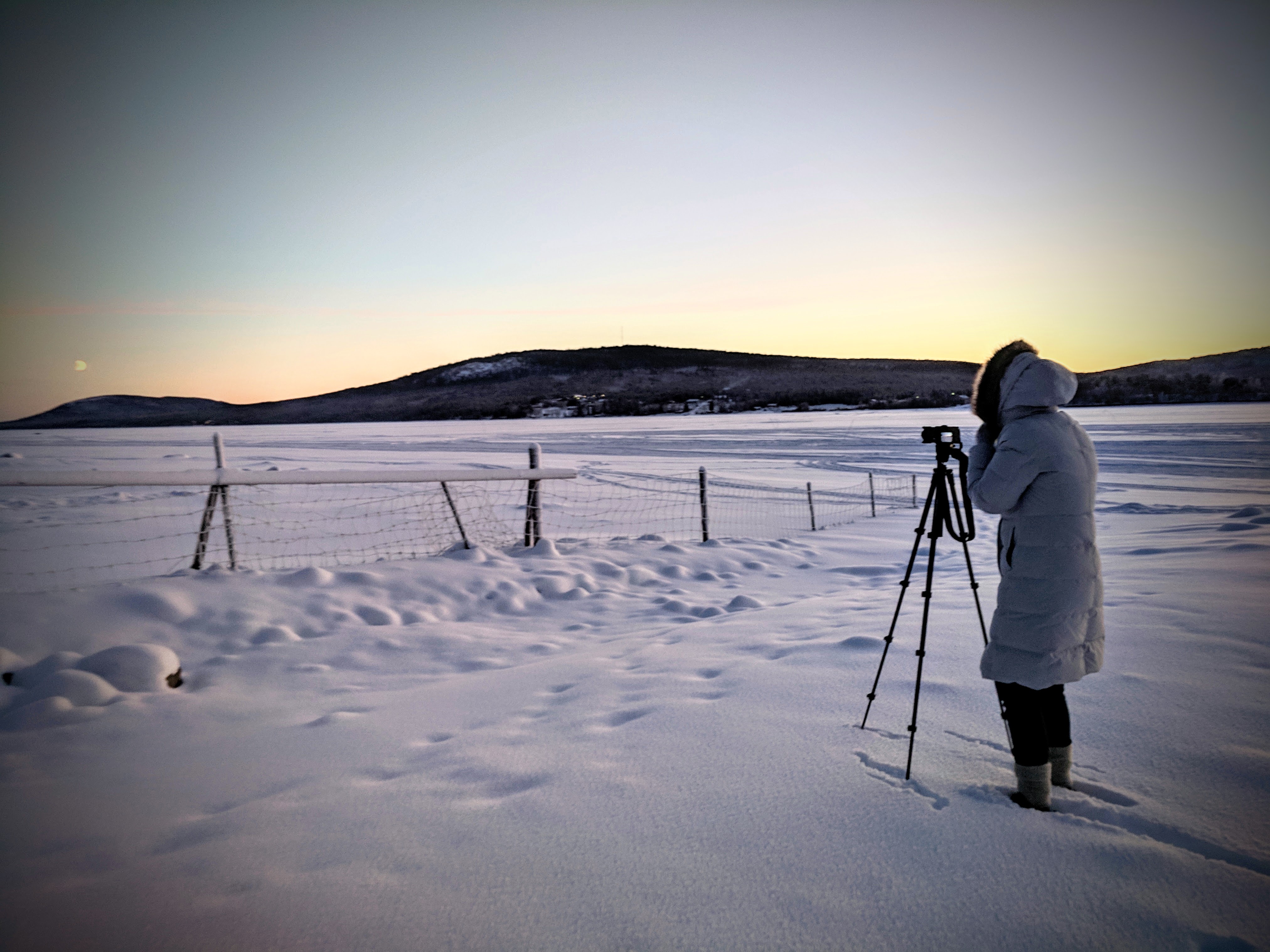
Braving the cold to take photos
And as day fades into night, the temperature drops further and stars fill the inky black sky. With some luck, the orange sunset gives way to the green Aurora Borealis. On our last night we decided to brave the cold and head outside to try out some astrophotography. We piled on layers of thermals, coats, beanies, and stuffed hand warmers in our gloves and shoes (we’d run out of toe warmers). I haven’t really done astrophotography so it was a lot of trial and error. After a while of trying different shots a guy joined us to take photos and asked if I had been photographing the Aurora. We’d been so focused taking photos one way that we hadn’t realised the Aurora was stretched out across the sky behind us: a beautiful green hue, softly glowing above the horizon.
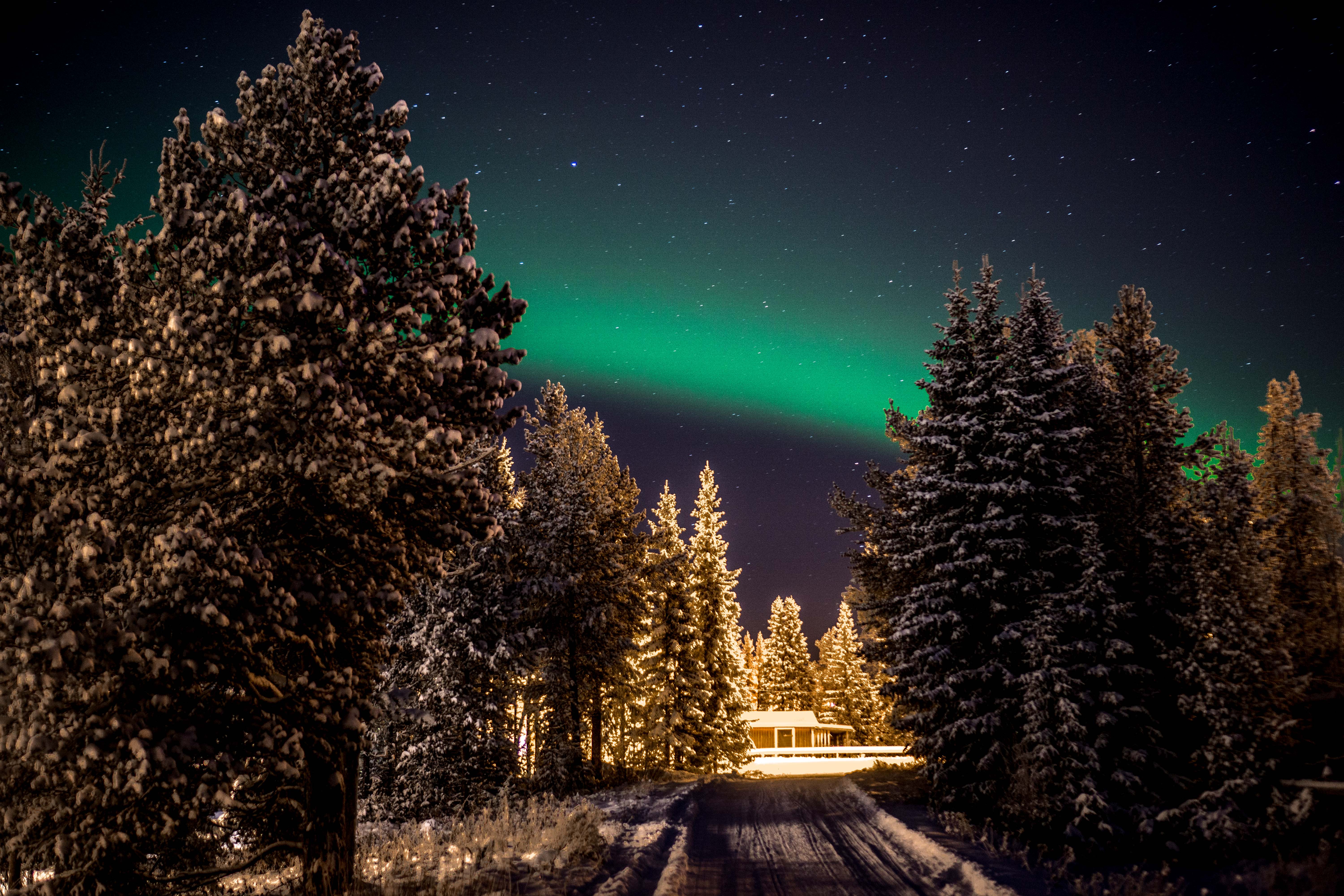
The Aurora Borealis
It was worth standing in -20ºC to have the chance to capture the Aurora. The incredible beauty of it all temporarily helped us to forget just how cold it was. In fact, my camera gave up before we did — covered in frost it no longer wanted to function, so we went to bed, the Aurora dancing across the sky above us.